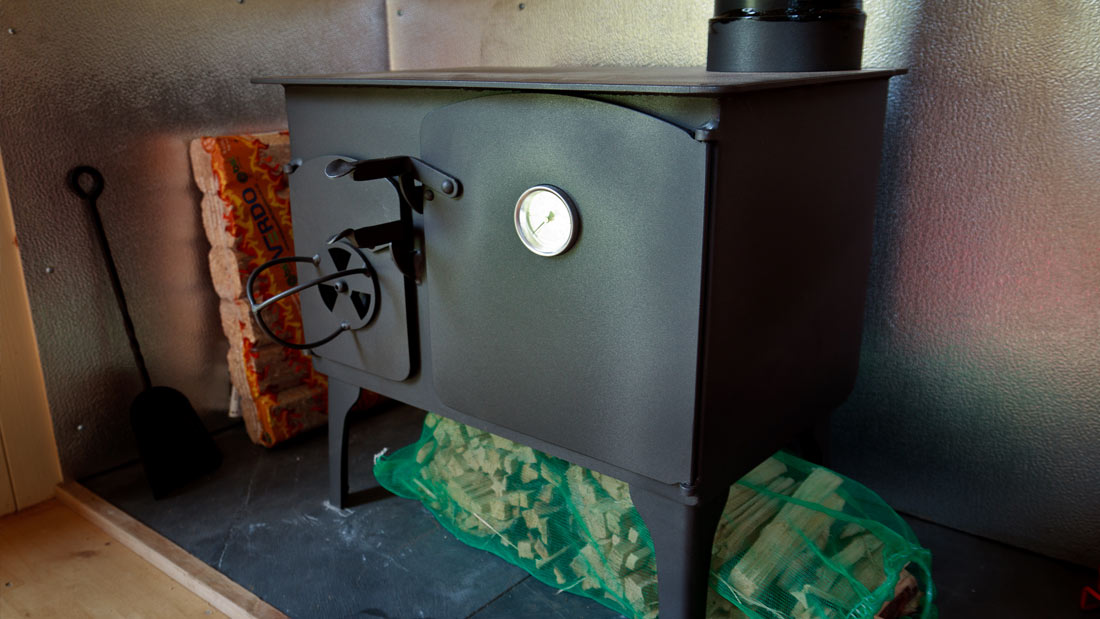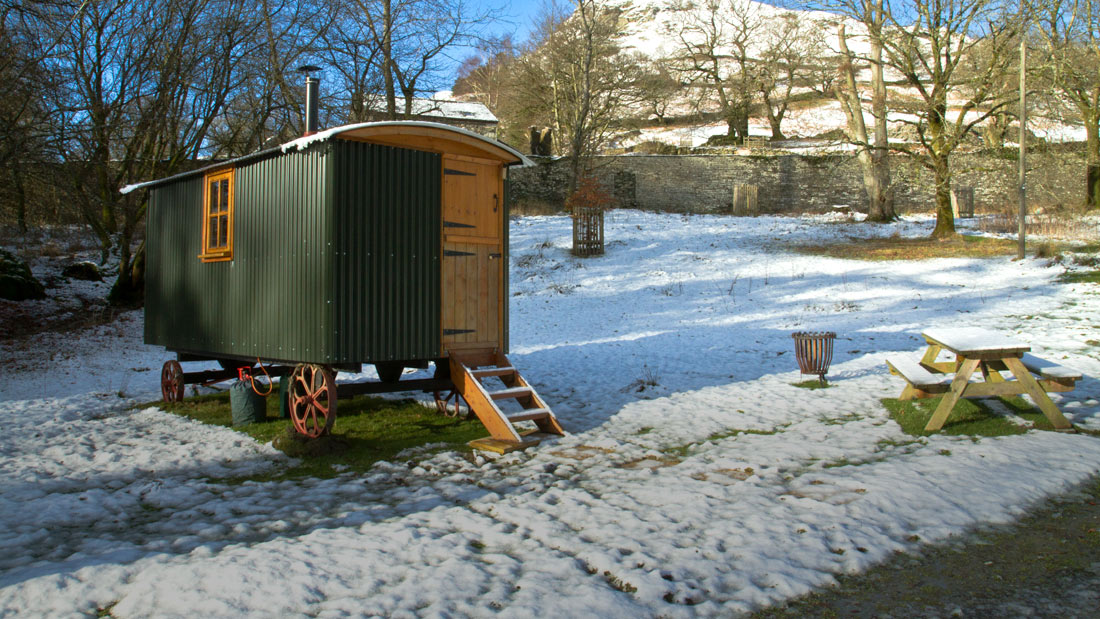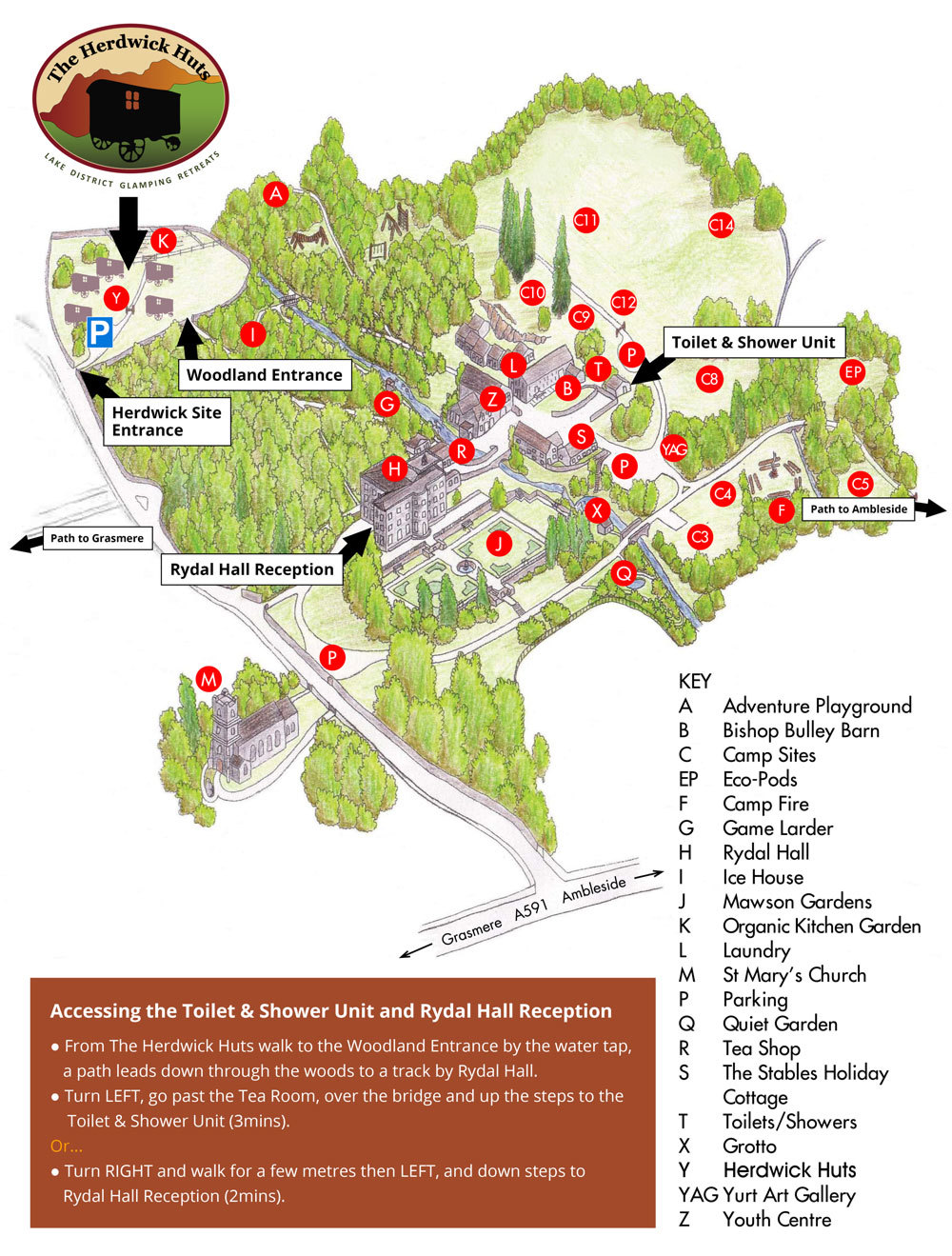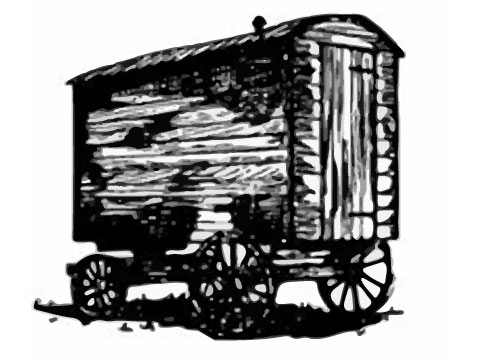Frequently Asked Questions
There is a large wood burning stove and complimentary recycled briquettes, kindling and firelighters to keep you toasty warm anytime of the year.

And for those of you that need a little help laying a fire
Scrunch up plenty of newspaper and lay eight to ten pieces of kindling (jenga style) over the top. Light, and when kindling is crackling lay a log on top – simple!
- At The Herdwick Huts we care about the environment and that's why all our cleaning products are environmentally friendly to both you and the land.
- Our huts have their very own solar panels for lighting and usb charging.
- Our briquettes are recycled hard wood and very efficient.
- There is really no need to buy plastic bottled water as there is a cannister in the huts that you can refill at the spring water tap. Water doesn't get any better than this, straight from the Fairfield mountain range.
- Rydal Hall has one of the largest hydro powered turbines, currently generating electricity for 400 local homes.
Rydal Hall is using traditional methods to restore a natural woodland on their 34 acre estate. The woods were previously a plantation to provide fuel and building materials for the 17th Century hall.
The first step is to open up the thick canopy to allow light to penetrate to the ground by removing the non-native trees, but in a dense wood, timber extraction is difficult. Turning away from vehicles and machinery, Rydal Hall engaged Dan Sumner, a local tree logger to use Cubb horses to drag the felled trees. Cubbs are similar to Shire horses but smaller. This ancient method will help support the red squirrel population and wildlife. Apart from being quieter and pollution free, the use of horses breaks up the ground allowing native grasses and plants to establish themselves, creating a woodland scrub layer and create small glades. Some of the wood will be used as fuel and the rest is being carefully stacked to provide wildlife habitats.
The project will be carried out over several years, by eco-foresters, the Rydal Hall estate team and volunteers. Local schools are being encouraged to use the Rydal woods as an educational resource. All of Rydal Hall’s woodland and gardens are open to the public and the estate is designated as a Special Conservation Area in the Lake District National Park.
Yes, The Herdwick Huts are open all year including Christmas and New Year with no chance of being cold with the large wood burning stove and with our new solar panels, the lighting is wonderful through those darker nights.


- A cool box is handy in the Summer
- A good torch for walking back to your Hut at night
- Wellies! just in case of rain
- Food & Drink – There is a large Booths supermarket outside Windermere Train Station (10min drive) or Ambleside has a Tesco, Coop and independent wholefood store called Granny Smiths (25mins scenic walk or 3min drive). The Badger Bar, pub / restaurant (5mins walk)
- Bath towel
- Toiletry bag
The nearest train station is Windermere where there are regular buses that stop directly outside the Rydal Hall entrance off the main road. Alternatively, there are usually taxis waiting outside the station.
 The first evidence of a wheeled Shepherd’s hut is 1596.
The first evidence of a wheeled Shepherd’s hut is 1596.Whilst thinking that the Shepherd's hut is a relatively new invention, maybe late 18th or early 19th Century, we were amazed to find out that these old beasts have been around a lot longer than that. Thanks to the presence of a few very early publications, we have traced a reference to a wheeled Shepherds hut from the 16th Century during the reign of Queen Elizabeth I.
Leonard Mascal, reputed to have become Chief farrier to King James VI, produced a number of very early works regarding rural life. His titles covered such subjects as fishing, plants and one entitled ‘Government of Cattel’ published in 1596 was split into three sections. The third section of this work was devoted to discoursing the order of sheep, goats, hogs, and dogs, with true remedies to help the infirmities that befall any of them : also perfect instructions for taking of moales, and likewise for the monthly husbanding of grounds.
The small yet important description appears in this book “in some place the Shepheard hath his cabbin going upon a wheele for to remove here and there at his pleasure”. This is probably the very first mention of a shepherds hut in the form that we currently recognize. It is also the first glimpse that the Shepherds accommodation from as long ago as the late 1500’s was in line with his status as a very important member of the farming community. Those in more rugged terrain such as Scotland, Wales and morland areas of England had to deal with the elements it seems, a hut on wheels needs a track suitable to take it. Boggy ground or hilly areas rule out ease of access for a portable hut. In these cases a more permanent building, sometimes referred to as a ‘lookers hut’ was built to protect the shepherd from his sometimes bleak environment. A shepherds hut was a big investment to a farm or Estate, costing the equivalent of up to 6 months of the Shepherd’s salary. However it seems that ownership in most cases stayed with the Landowners rather than the Shepherd.
History reproduced with permission from www.shepherdhuts.co.uk
“The shepherd strays, a rolling hut his home” William Wordsworth
All the of the huts accept a well behaved dog except the hut called 'Tarn'. Please note that there is a £20.00 supplement to bring a dog and we do not allow dogs on the bedding or cushions.

